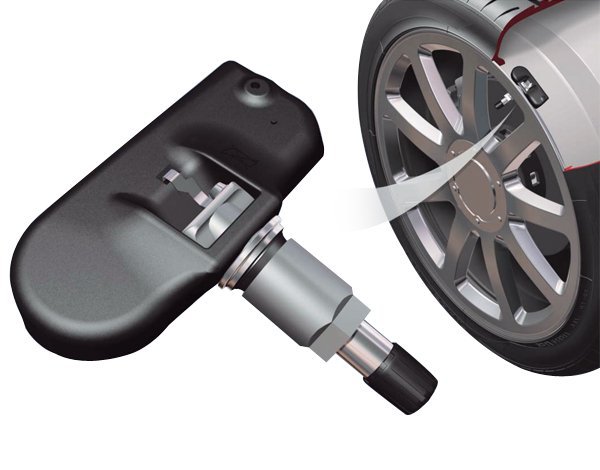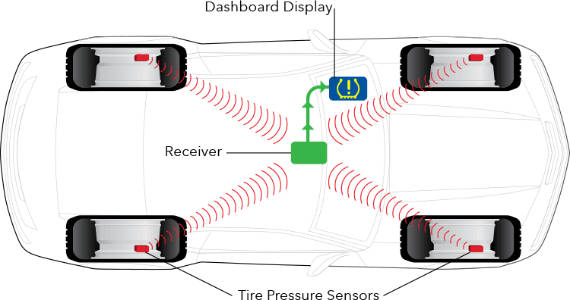To replace a tire pressure sensor, follow these steps: Remove the wheel, detach the sensor from the valve stem, install the new sensor, and reattach the wheel. This process ensures accurate tire pressure readings and safe driving.
Tire Pressure Monitoring Systems (TPMS) play a crucial role in vehicle safety by alerting drivers when their tire pressure is too low. Maintaining the correct tire pressure ensures optimal fuel efficiency, tire longevity, and overall vehicle performance. Over time, TPMS sensors can wear out, malfunction, or require replacement due to dead batteries.

Contents
- 1 What is a Tire Pressure Sensor?
- 2 Reasons for Replacing Tire Pressure Sensors
- 3 Tire Pressure Sensor Replacement
- 3.1 Guide to Replacing a Tire Pressure Sensor
- 3.1.1 Step 1: Identify the Faulty Sensor
- 3.1.2 Step 2: Prepare the Vehicle
- 3.1.3 Step 3: Remove the Tire
- 3.1.4 Step 4: Break the Bead and Access the Sensor
- 3.1.5 Step 5: Remove the Old Sensor
- 3.1.6 Step 6: Install the New Sensor
- 3.1.7 Step 7: Reinstall the Tire
- 3.1.8 Step 8: Lower the Vehicle and Torque the Lug Nuts
- 3.1.9 Step 9: Reprogram the Sensor (if necessary)
- 3.1.10 Step 10: Test the System
- 3.2 Tips for Tire Pressure Sensor Maintenance
- 3.1 Guide to Replacing a Tire Pressure Sensor
- 4 Cost of TPMS Sensor Replacement
- 5 Frequently Asked Questions
What is a Tire Pressure Sensor?
A tire pressure sensor is part of a vehicle’s TPMS, which monitors the air pressure inside each tire. The sensor communicates this data to your vehicle’s dashboard, where it triggers a warning light if the pressure falls below or exceeds recommended levels. The two primary types of TPMS are:
- Direct TPMS: Uses pressure sensors inside the tire to measure the actual air pressure.
- Indirect TPMS: Estimates tire pressure by monitoring the speed and rotation of the tires through the ABS system.
Direct TPMS sensors are more accurate and are the focus of most replacements, as they are physically installed in the tire.

Credit: www.discounttire.com
Reasons for Replacing Tire Pressure Sensors
There are several reasons why your tire pressure sensor may need to be replaced:
- Battery Failure: Most TPMS sensors are powered by small, non-replaceable batteries that typically last 5-10 years. When the battery dies, the entire sensor must be replaced.
- Sensor Damage: Sensors can be damaged by improper tire removal, road hazards, or extreme weather conditions.
- Faulty Sensor: Like any electronic device, TPMS sensors can fail due to internal malfunctions, causing inaccurate readings or failure to communicate with the vehicle’s computer.
- Tire Replacement: When installing new tires, it’s a good idea to inspect and, if necessary, replace the TPMS sensors, especially if they are nearing the end of their lifespan.
Tire Pressure Sensor Replacement
Before starting the replacement process, gather the necessary tools and materials:
- New TPMS Sensor(s): Ensure the replacement sensor is compatible with your vehicle.
- Valve Core Tool: For removing and installing the valve cores.
- Tire Iron or Lug Wrench: To remove the tire.
- Tire Bead Breaker: To separate the tire from the rim.
- Torque Wrench: For properly torquing lug nuts and sensor components.
- TPMS Programming Tool: Some vehicles may require the sensor to be programmed or re-learned by the car’s computer.
- Jack and Jack Stands: To safely lift and secure the vehicle during tire removal.
Guide to Replacing a Tire Pressure Sensor
Follow the step by step guide below to replace tire pressure sensor –
Step 1: Identify the Faulty Sensor
When the TPMS warning light appears on your dashboard, it may indicate a problem with one or more of your tire pressure sensors. Some vehicles can specify which tire has the faulty sensor, while others will need to be checked manually. Use an OBD-II scanner or visit a professional service to identify the faulty sensor.
Step 2: Prepare the Vehicle
Park your vehicle on a flat surface and ensure the parking brake is engaged. Use a jack and jack stands to lift and secure the car. Loosen the lug nuts using a tire iron but don’t remove them completely until the tire is off the ground.
Step 3: Remove the Tire
With the vehicle lifted, fully remove the lug nuts and take off the tire. Be careful to avoid damaging the rim or valve stem as you remove the tire.
Step 4: Break the Bead and Access the Sensor
Use a tire bead breaker to carefully separate the tire from the rim. You don’t need to fully remove the tire from the rim—just create enough space to access the TPMS sensor, which is located inside the valve stem.
Step 5: Remove the Old Sensor
Once the bead is broken, locate the TPMS sensor. It is typically attached to the valve stem. Use a valve core tool to remove the valve core and release any remaining air in the tire. Unscrew the old sensor from the valve stem and carefully pull it out.
Step 6: Install the New Sensor
Install the new TPMS sensor into the valve stem, ensuring it’s positioned correctly and tightened according to the manufacturer’s specifications. This step is crucial to prevent air leaks. Some sensors have a gasket or seal that must be replaced during installation.
Step 7: Reinstall the Tire
Once the new sensor is securely in place, re-seat the tire bead onto the rim. Use an air compressor to inflate the tire to the recommended pressure and ensure there are no leaks around the valve stem. After inflating, place the tire back on the vehicle and tighten the lug nuts by hand.
Step 8: Lower the Vehicle and Torque the Lug Nuts
Lower the vehicle from the jack stands and use a torque wrench to tighten the lug nuts to the manufacturer’s recommended torque specification. This ensures that the wheels are securely fastened.
Step 9: Reprogram the Sensor (if necessary)
Some vehicles require the new TPMS sensor to be programmed or re-learned by the car’s computer. Use a TPMS programming tool to sync the new sensor with the vehicle, following the instructions provided with the tool or in your vehicle’s manual.
Step 10: Test the System
After replacing the sensor and programming it (if required), turn on the vehicle and check the TPMS warning light. If the light goes off after a few minutes, the sensor has been successfully replaced. If the light stays on, recheck the sensor installation and ensure the system has been reprogrammed correctly.

Tips for Tire Pressure Sensor Maintenance
Follow the tips below to maintain the tire pressure sensor –
- Regular Inspections: Check TPMS sensors during routine tire maintenance to ensure they are functioning correctly.
- Replace Sensors During Tire Changes: Since TPMS sensors have a limited lifespan, consider replacing them whenever you get new tires to save labor costs in the future.
- Avoid Aftermarket Wheels Without TPMS Compatibility: Some aftermarket wheels don’t support TPMS sensors. Always ensure compatibility when upgrading wheels.
Cost of TPMS Sensor Replacement
The cost of replacing a tire pressure sensor can vary depending on the make and model of your vehicle, the type of sensor, and whether you’re doing it yourself or taking it to a professional. On average, replacement sensors cost between $50 to $100 each. If you opt for professional installation, labor costs typically range from $50 to $75 per tire, bringing the total cost to around $200 to $400 for all four sensors.
Frequently Asked Questions
Here are some FAQs about tire pressure sensor –
1. How often do tire pressure sensors need to be replaced?
Tire pressure sensors usually last between 5 to 10 years, depending on the battery life. Once the battery dies, the entire sensor must be replaced.
2. Can I replace a TPMS sensor myself?
Yes, if you have the right tools and are comfortable working with tires. However, for many vehicles, you will also need a TPMS programming tool to sync the new sensor with your vehicle’s system.
3. Will a bad tire pressure sensor affect my car’s performance?
A faulty tire pressure sensor won’t directly affect vehicle performance, but it can lead to under-inflated tires, which reduce fuel efficiency, cause uneven tire wear, and pose safety risks.
4. How much does it cost to replace a TPMS sensor?
The cost varies, but a single sensor typically costs $50 to $100, with professional installation adding another $50 to $75 per tire.
5. Do I need to replace all four TPMS sensors at once?
No, you don’t need to replace all four sensors at the same time unless they are all malfunctioning or nearing the end of their lifespan. However, replacing them during tire changes can save time and money.
Conclusion
Tire pressure sensors are critical for ensuring your vehicle’s safety and efficiency. While they may seem like small, insignificant components, maintaining and replacing them when necessary can save you from larger problems like tire blowouts or poor fuel economy.
Whether you decide to replace the sensors yourself or take your car to a professional, understanding the process and knowing what tools are needed will help you make informed decisions. Regularly checking your TPMS and addressing any issues promptly is key to keeping your vehicle running smoothly.